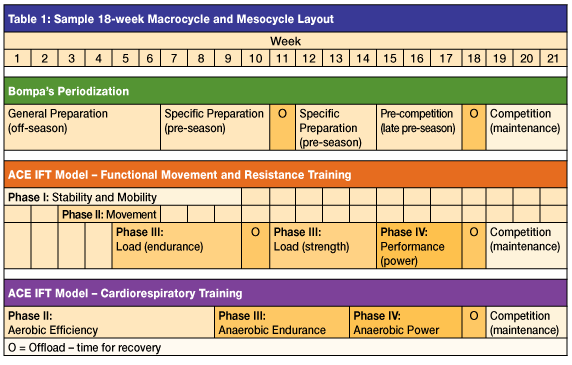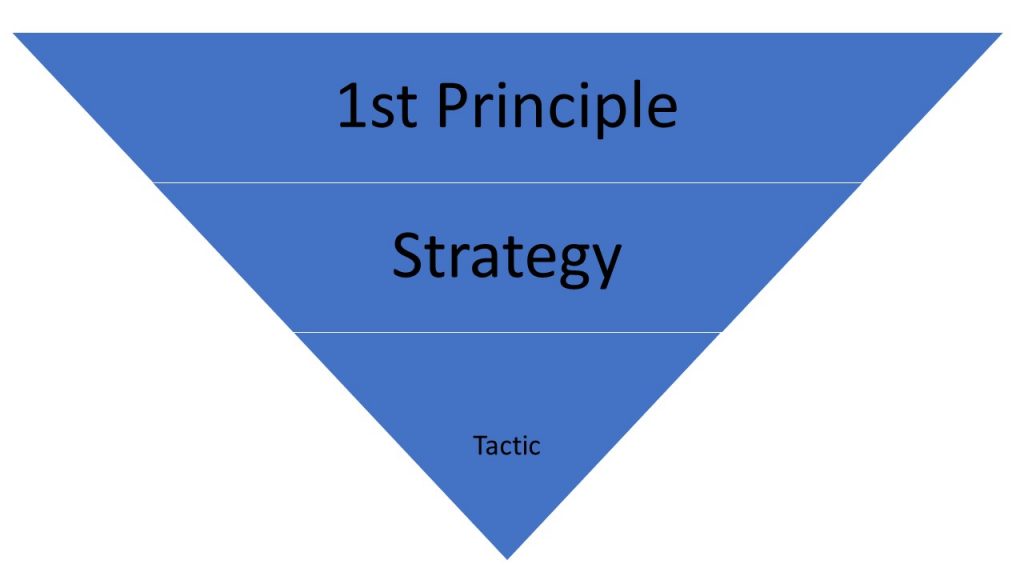Do you apply periodization to the training of your athletes? Or do you believe that periodization does not apply to youth athletes?
Periodization is a controversial topic within our field. Below are some of the critique points that I have come across in recent years:
- Periodization is not scientifically proven.
- Periodization is overrated and over studied.
- Periodization is too rigid and does not work for our athletes.
- Periodization is too time-consuming.
- Periodization is too complex and only for people in lab coats
These critique points may be true if your understanding of Periodization is limited to Periodization as a tactic. However, Periodization is fundamentally a strategy.
From my personal experience as a strength coach, author, and lecturer over the last 25 years, I have found it incredibly useful – even absolutely necessary – to distinguish between principles, strategies, and tactics in order to really understand a particular topic.
Thus, the purpose of this article is to
- Highlight the difference between principles, strategies, and tactics as it applies to Periodization.
- Show that you can reject any one example of Periodization as a tactic, but you cannot reject Periodization as a strategy (and this insight will be extremely helpful)
What is a principle?
A “principle” is a basic truth, law or assumption (thefreedictionary.com). A first principle is a basic, foundational, self-evident proposition or assumption that cannot be deduced from any other proposition or assumption.
What could be deemed a first principle of athletic development? I recommend that you answer that in detail for yourself in a way that resonates with your work.
My background is strength and conditioning, not coaching a specific sport. Thus, here is a suggestion for a 1st Principle of Athletic Development as centered on the physical side:
Optimal development of bio-motor abilities (physical qualities) to support the ability to practice and compete (the specific sport/s) – with maximal quality – at the desired level, at a given age.
You could say that a principle is vague. However, the above phrase invites critical questions and consequences:
- What does optimal mean? It is the balance of all involved abilities that support the young athlete’s ability to practice and compete.
- Supporting the ability to practice and compete with maximal quality implies prevention of injury and the nourishment of motivation, joy and confidence.
Thus, the 1st Principle defines the overall objective of our work as coaches.
How are we going to achieve this objective?

Figure 1: The overarching task is defining the 1st Principle. The strategy is chosen to achieve the 1st Principle. Tactics are used to execute the strategy.
A Strategy is Chosen to Achieve the Objective That is Defined by the 1st Principle
A strategy is the larger, overall plan designed to achieve a major or overall aim. The strategy will be comprised of several tactics. A strategy is broad, big-picture and future-oriented (1)
The training literature contains multiple but related definitions of Periodization. (2) Fundamentally, the word periodization means “a division in to periods.”
If you do a web search with the word periodization, you will find books on sports training, history and geology.
Thus, “periodization” is a word similar to “categorization” (dividing items – for example, apples divided into categories) or classification (for example dividing athletes into age groups, levels or weight classes).
From the definition of periodization as a ‘division into periods” it becomes clear that, fundamentally, periodization is a strategy for organizing long-term training by dividing the training into shorter periods.
We can take this definition a step further and suggest a more training-specific definition of periodization:
“Periodization is a division of a longer training cycle into periods with different goals, structures, and content of the training program. When these periods are sequenced in such a way that the training adaptations in one period prepare the athlete for the training in the next period, then the selected physical abilities are optimized at the goal-attainment date.”
The above definition highlights why periodization as a strategy is virtually unavoidable unless your training programs always:
- Are geared toward the same training adaptation
- Have the same structure
- Have the same content
Tactics
Clearly, there are more decisions to be made before we have a finished program. These more detailed decisions are the “tactics.” The strategy can be executed with different tactics. Tactics are plans, tasks, or procedures that can be carried out. Tactics may be part of a larger strategy.
So far, Linear Periodization, Reverse Linear Periodization, Undulating Periodization, and Block Periodization are the only systems that have been researched in controlled studies. These systems are all periodization tactics.
I have never seen a critique of periodization as a strategy. When I have seen a critique of periodization, the critique has been of a particular periodization tactic.
As a trainer, you can look at any one of those systems and decide whether or not they are not ideal tactics for the athletes that you work.
However, once you make that choice, you still have to decide how are you going to organize your long-term training?
Conclusion
This article described a hierarchy of 1st principles, strategy, and tactics. It made the argument that periodization is fundamentally a strategy. Yet, the critique of periodization is typically centered on tactics rather than principles or strategies.
A “next step” in exploring periodization is the question about how to divide the long-term period into shorter periods as well as a deeper look into the characteristics of the mentioned periodization systems. More to come….
- https://www.diffen.com/difference/Strategy_vs_Tactic
- Jensen, K. Appendix 1. Periodization Simplified: How To Use The Flexible Periodization Method on the Fly. www.yestostrength.com

Karsten Jensen has helped world class and Olympic athletes from 26 sports disciplines since 1993. Many of his athletes have won Olympic medals, European Championships, World Championships and ATP Tournaments.
Karsten is the first strength coach to create a complete system of periodization, The Flexible Periodization Method – the first complete method of periodization dedicated to holistic, individualized and periodized (H.I.P) training programs.
Karsten shares all aspects of The Flexible Periodization Method (FPM) with his fellow strength coaches and personal trainers through The Flexible Periodization Method workshop series (Levels I-VIII). Find more information at www.yestostrength.com.

